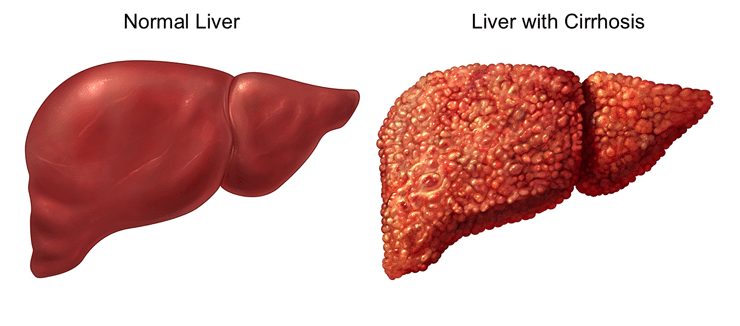- srushtigastro@gmail.com
- +91- 8073380392
Cirrhosis Of Liver

Cirrhosis of the liver develops over time as a result of long-term liver damage and inflammation. Common causes include chronic alcoholism, viral hepatitis (such as hepatitis B and C), fatty liver disease, and certain autoimmune conditions. As the liver attempts to repair itself from ongoing injury, scar tissue gradually replaces healthy tissue, impairing the liver’s ability to perform vital functions such as detoxification, metabolism, and synthesis of essential proteins.
Symptoms of cirrhosis can vary depending on the severity of the disease and may include fatigue, weakness, jaundice (yellowing of the skin and eyes), abdominal pain and swelling, easy bruising and bleeding, itching, and confusion or cognitive impairment. Complications of cirrhosis can be severe and may include portal hypertension (increased pressure in the liver’s blood vessels), ascites (fluid buildup in the abdomen), hepatic encephalopathy (a decline in brain function due to liver failure), variceal bleeding (bleeding from swollen veins in the esophagus or stomach), and an increased risk of liver cancer. We provide the best Treatment of Cirrhosis Of Liver in HSR Layout. Contact us today.
Diagnosis typically involves a combination of medical history, physical examination, imaging tests (such as ultrasound or MRI), blood tests to assess liver function and evaluate for markers of liver damage, and sometimes a liver biopsy to confirm the presence of cirrhosis and determine its severity.
Treatment aims to manage symptoms, prevent complications, and slow the progression of the disease. This may involve lifestyle changes such as abstaining from alcohol, maintaining a healthy diet, and managing underlying conditions such as viral hepatitis. Medications may be prescribed to manage symptoms such as itching, reduce the risk of complications like variceal bleeding, or slow the progression of liver damage. In some cases, liver transplantation may be necessary for advanced cirrhosis that does not respond to other treatments.
Benefits:
Overall, addressing cirrhosis of the liver through early detection, appropriate treatment, and lifestyle modifications can help mitigate its impact, improve outcomes, and enhance the well-being of affected individuals.
Empowering assistance, right when it matters. We’re here to lend a hand whenever you need it.

Call : +91- 8073380392
srushtigastro@gmail.com
Srushti Gastro & liver Clinic 186, 165, 9th Main Rd, Sector 6, HSR Layout, Bengaluru, Karnataka 560102